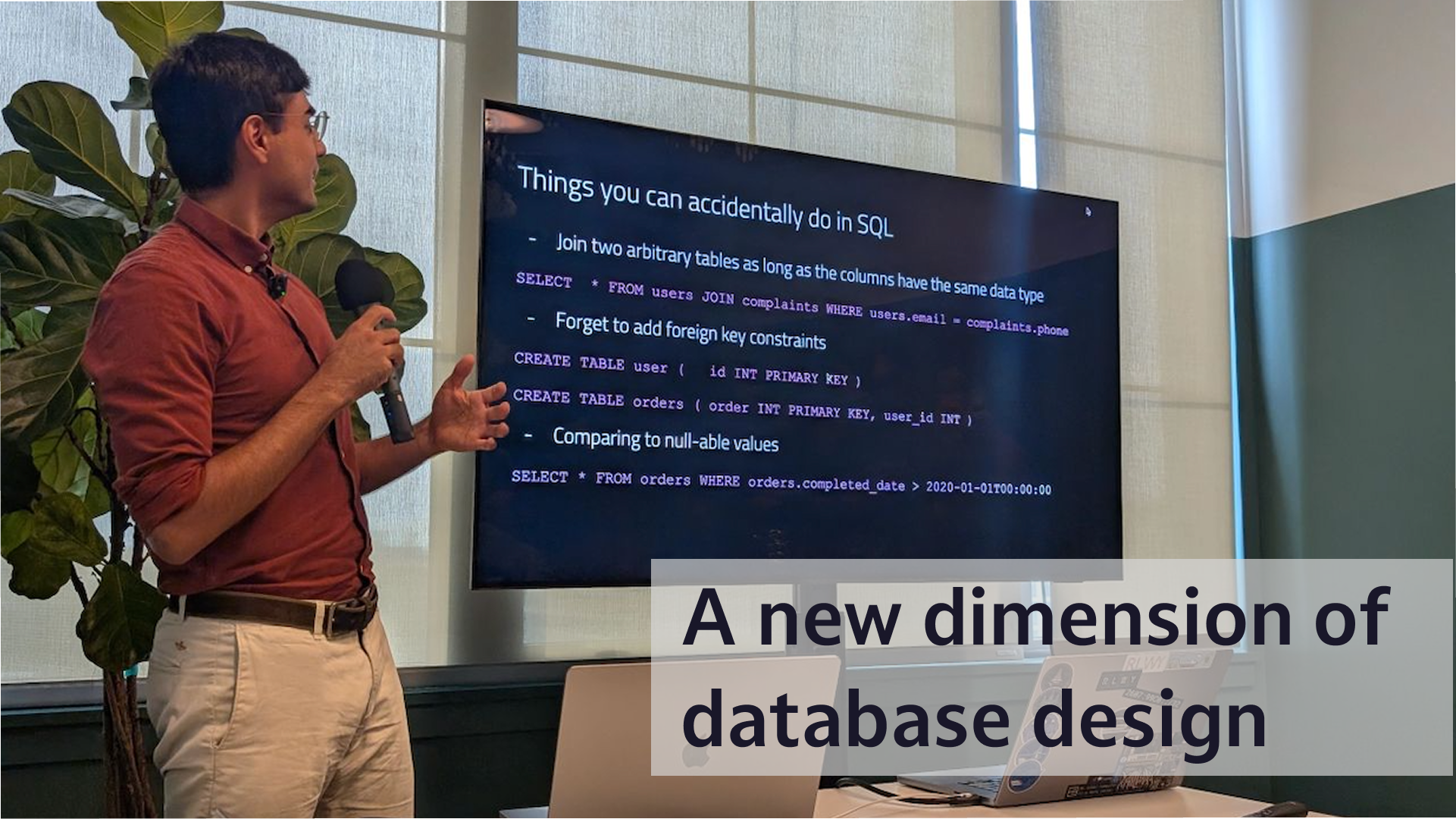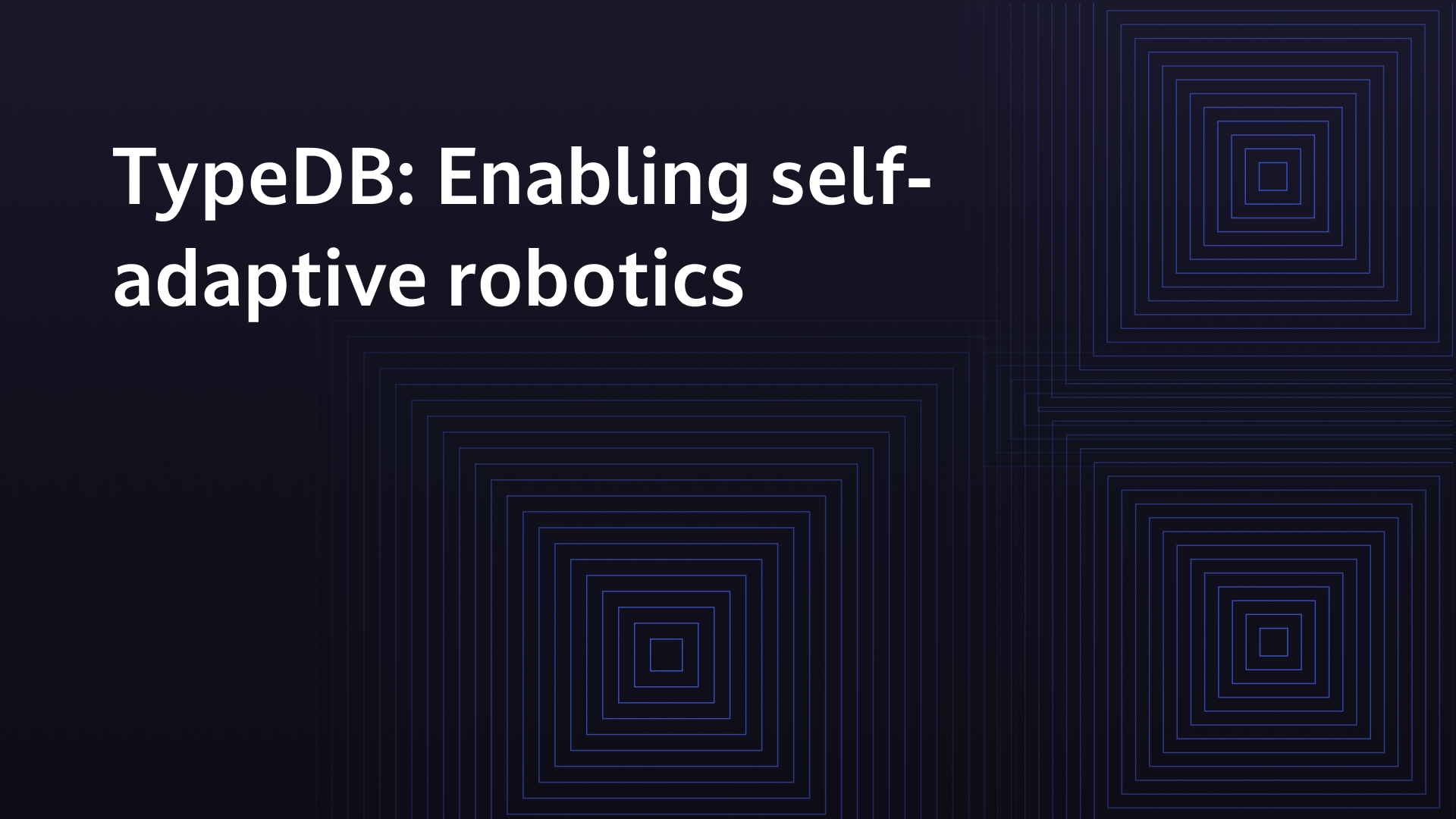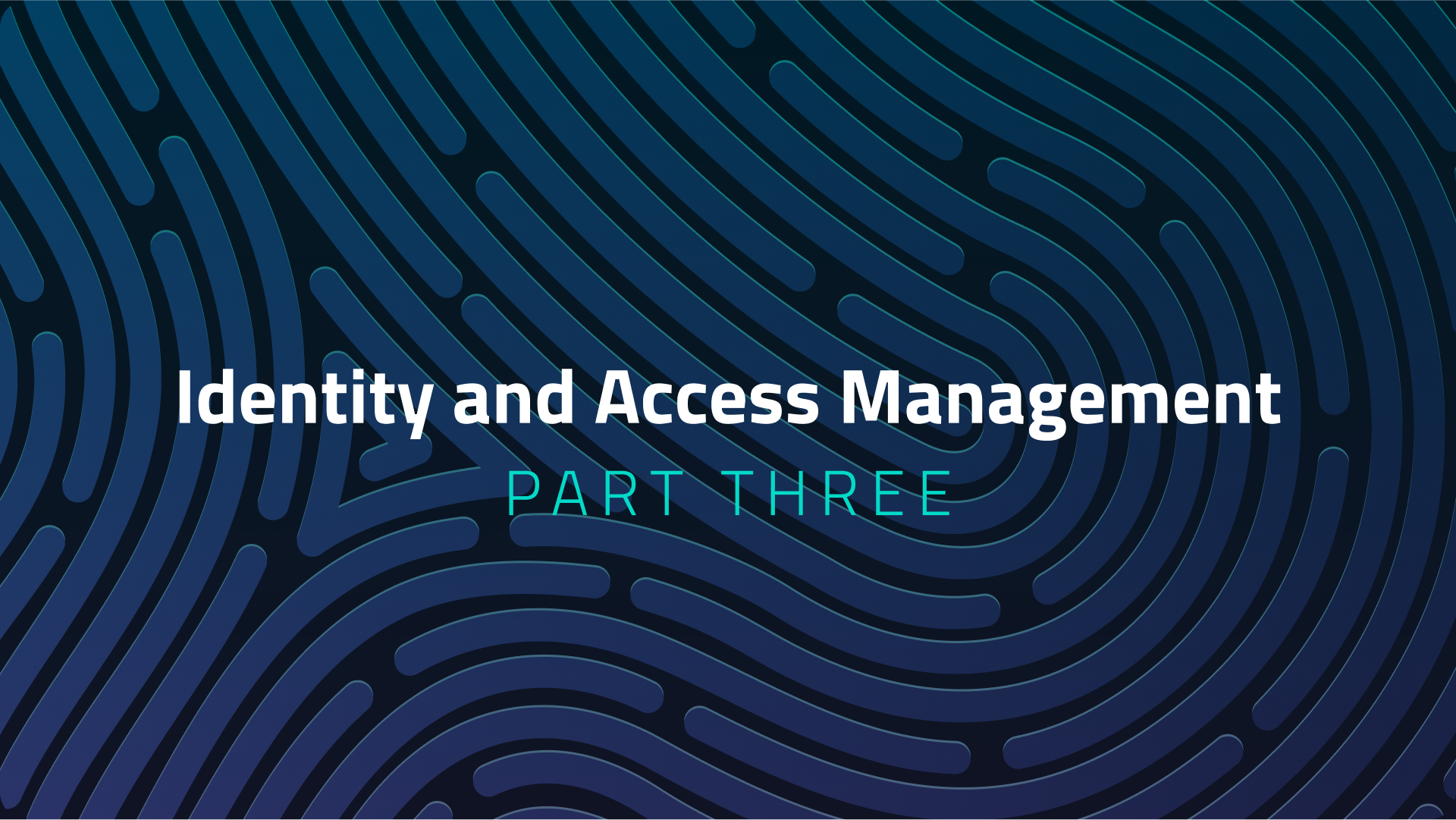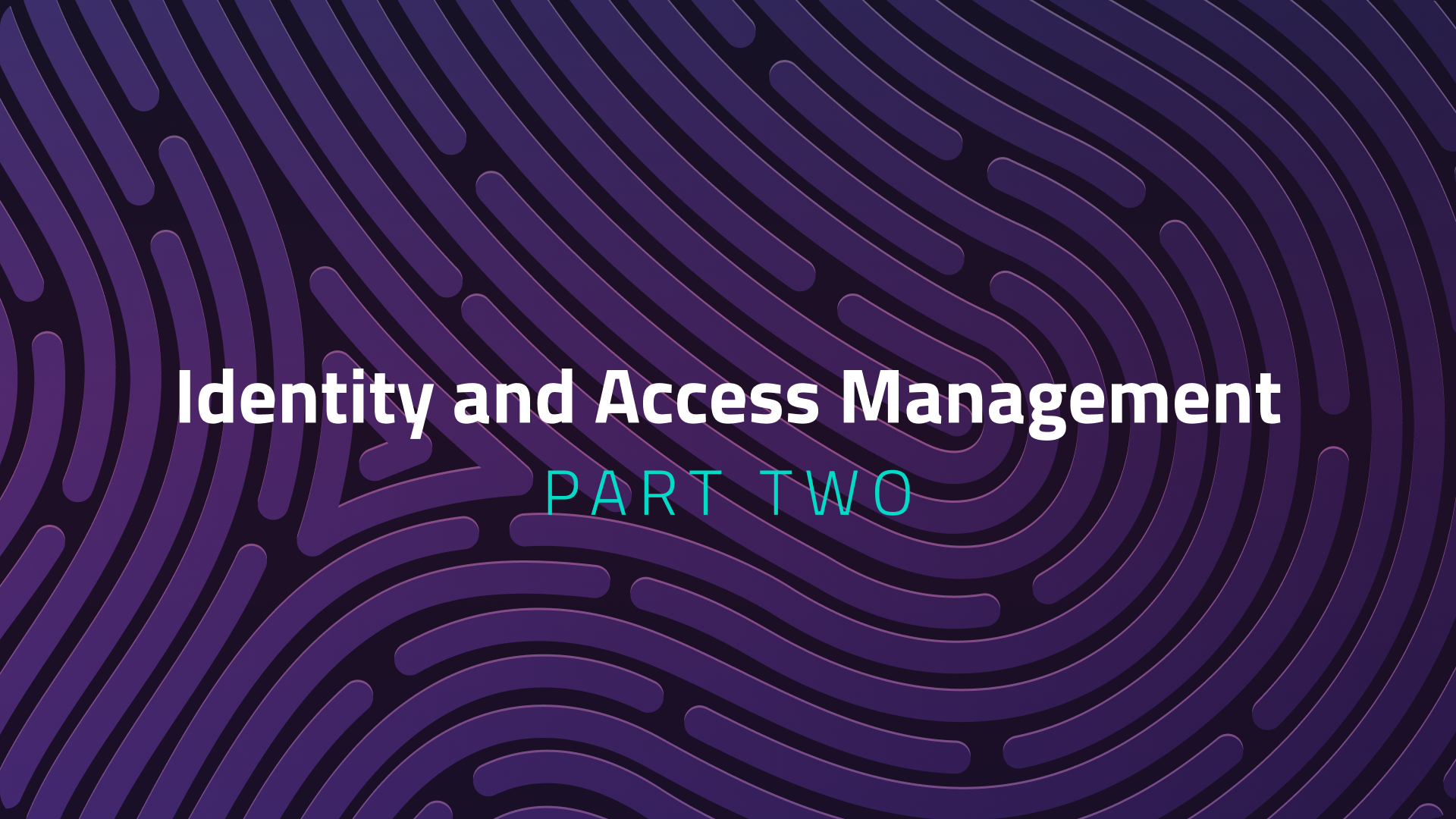TypeDB Blog
Learn from our journey building TypeDB & TypeQL.

A new dimension of database design
TypeDB is built on a rich, expressive type system that validates queries, enforces semantics, and unlocks semantic optimisation. A safer, smarter foundation for complex systems.

How TypeDB enables self-adaptive robotics: A new approach to complex systems
Explore a new self-adaptive robotics framework using knowledge-based modeling, and how TypeDB can support this approach. Includes a new open robotics schema to help teams reason across task and system layers.
You might also be interested in ...
Learning Center
Lectures
Papers

TypeDB Studio is now in your browser
Explore knowledge graphs, design rich schemas, and write expressive queries—now instantly accessible in your browser.

An interview with our head of research
Christoph recently took the time to sit down with Cal, our COO to be interviewed about his experiences at TypeDB, and working on a novel database.

TypeDB 3.0 is now live
Announcing the public release of TypeDB 3.0. This represents a new bar for TypeDB in terms of performance, usability, maintainability, scalability, and security.

What is an entity-relation database?
TypeDB is the first entity-relation database. When we started the company, we set out to craft a generalist database that can natively express and translate between diverse data and models. We did so by creating our own language.

Start faster on TypeDB with new learning materials
Over the past few months we've spent a lot of time building new learning material for TypeDB, and all of these materials are now available! No matter where you are on your TypeDB journey, there's something new for you to explore.

An introduction to TypeDB for language architects
Learn about two foundational advances in databases technology pioneered by TypeDB, the joy of designing principled programming languages, and what the future will hold for TypeDB, its query language TypeQL, and its ecosystem.
The TypeDB 3.0 Roadmap
The upcoming release of version 3.0 will represent a major milestone for TypeDB: it will bring about fundamental improvements to the architecture and feel, and incorporate pivotal insights from our research and user feedback.

New Foundations for Building with TypeDB
Our TypeQL paper was accepted at ACM SIGMOD/PODS'24, TypeDB Cloud now provides free-tier deployments, we built a new TypeDB Learning Course hand-in-hand with our new documentation, and more!

The theory of TypeQL: pioneering typeful query languages
Despite breaking with the traditions of long-established database query languages, TypeQL often feels deeply familiar even to first-time users of the language—this is because TypeQL is directly built on the principles of modern programming language theory, which distill how we intuitively interact with computers using simple, yet formal, structures: types.
Introducing the Type Theory and Polymorphic Foundations of TypeDB
When we look at the evolution of databases in the last 40 years since relational algebra and SQL, even though there has been incredible progress in performance and operational capabilities, databases have yet to provide more powerful abstractions to express more advanced logic. Database models have failed to keep up with the rapid evolution of programming languages, and modern applications must use complex layered architectures to manage data as a result.
What it means to be more strongly-typed than SQL and NoSQL
Unlike existing database paradigms, TypeDB is designed based on modern ideas from type theory. If you want to learn how this works in detail, you may be interested in our article on type-theoretic databases in our learning section. In this post, we will discuss a crucial difference between TypeDB and other database paradigms, which is a direct result of these type-theoretic foundations of TypeDB. But don’t worry, we won’t assume any familiarity with type theory and will keep our discussion as high level as possible!
The need for subtyping and polymorphism in databases
In this article, we’ll explain how a new revolution in databases overcomes the limitations of relational, document and graph databases by using subtyping and polymorphism — core object-oriented (OO) programming principles — to create higher abstractions and achieve greater expressivity.
Accelerating drug discovery with applied knowledge engineering and TypeDB
In this blog post, we’ll look at how TypeDB can be used to model complex biological relationships and accelerate the drug discovery processs as part of the open-source TypeDB Bio project.
Building a Cyber Threat Intelligence database with TypeDB
CTI (Cyber Threat Intelligence) plays a critical role in protecting sensitive data and digital assets in the ever-evolving battlefield of cybersecurity, where organizations must stay one step ahead of attackers. Organizations need strong, effective threat research databases in order to recognize and prevent attacks.
Modeling collections in databases: Relational/SQL vs TypeDB
Databases excel at handling traditional data types such as numbers and strings, but they lack robust mechanisms for working with complex data structures like collections (e.g., lists and sets). In this blog post, we explore the difficulties encountered when storing data as collections in databases.
The age of AI is upon us — where are the smart databases?
What if you could ask sophisticated questions without having to tell the database how to answer them? In the same way AI-powered code generation tools can improve developer productivity, so can an AI-powered database.

Inheritance and polymorphism: where the cracks in SQL begin to show
Polymorphism can be one of the most challenging things to model in a database. Not only do you want your database to be performant, you also want it to feel intuitive so that queries you write make sense and are simple to maintain, and polymorphic data can easily mess up that balance if you don’t take the time to consider how best to implement it.
Identity and access management with TypeDB: Part III, inference
In the last two blogs, we learned how to model polymorphic permissions and automate permission inheritance. Now, we’ll finish this blog series by explaining how to enforce policy compliance at the schema level.
Identity and access management with TypeDB: Part II, transitivity
Previously, we learned how to model polymorphic permissions. Here, we’ll show you how to automate permission inheritance. Finally, in the third blog, we’ll explain how to enforce policy compliance at the schema level.
Identity and access management with TypeDB: Part I, polymorphism
Designing an IAM platform that can support a broad variety of applications, resources and permissions and enforce sophisticated business policies, both now and in the future, is a daunting task. In this blog series, we’re going to show how TypeDB can meet these requirements with a powerful yet lean data model and intuitive query design.

A New Era for TypeDB
When we started building TypeDB, we saw a continuously growing complexity of data in modern applications. Modern programming languages have evolved by introducing powerful abstractions and constructs to express more complex logic — JavaScript is succeeded by TypeScript, Python by Julia, Java by Kotlin, C/C++ by Rust, and Haskell emerging as the leader of functional languages. Modern languages all have a stronger and more expressive type system.
What is a Knowledge Graph?
Ever since Google popularised the term in 2012, knowledge graphs have seen massive amounts of public interest. From Fortune 500 companies to universities, organisations all over the world are investing large resources into knowledge graphs.
Inference in TypeDB
The Wikipedia interpretation of inference is “moving from premises to logical consequences”. This definition is so broad that we can actually identify two distinct types of inference TypeDB does: Rule inference and type inference. With TypeQL, we’ve combined both types of inference into a powerful query language. This forms the basis of a paradigm-shifting database that puts elegant modelling at your fingertips.




















